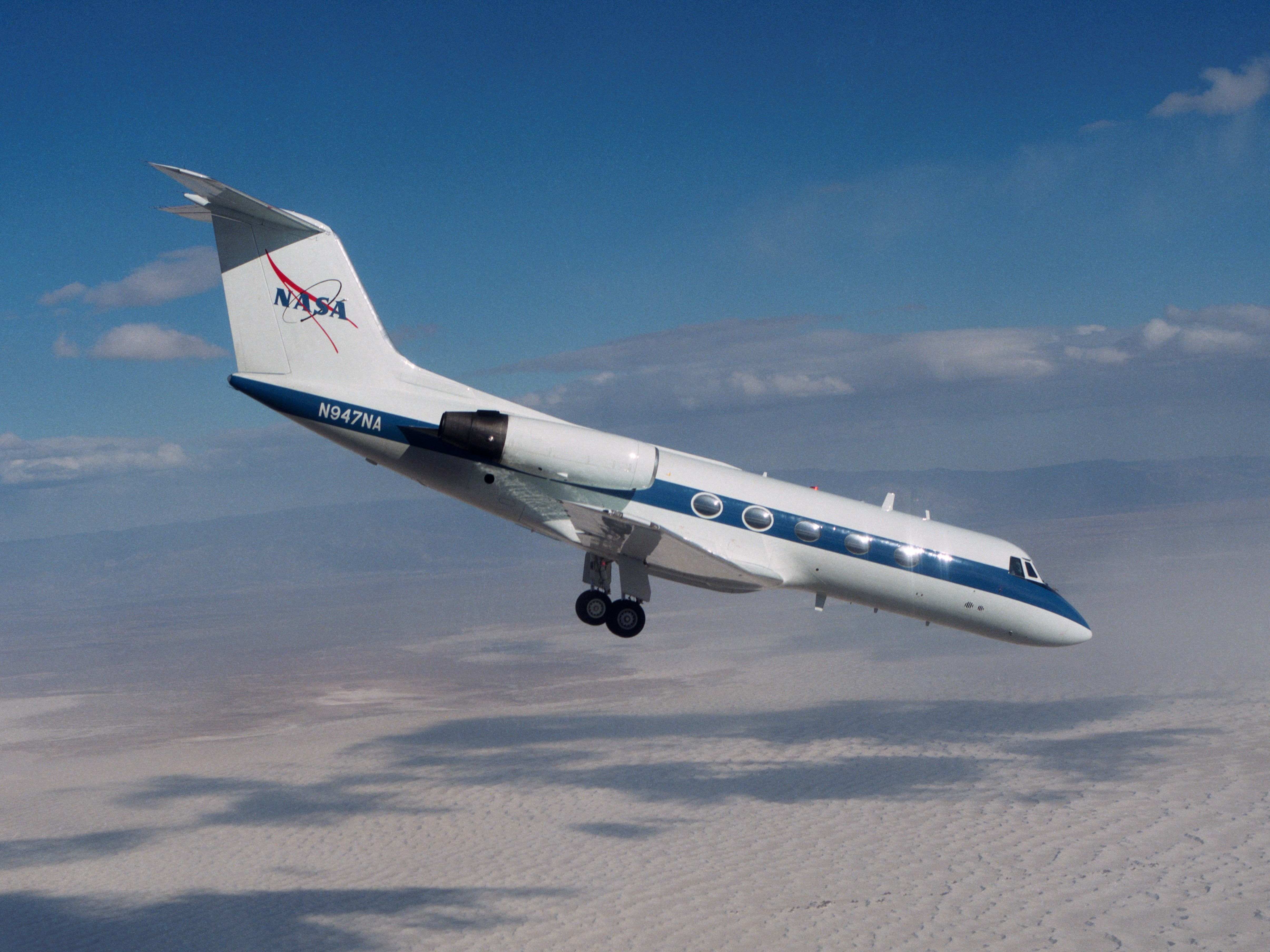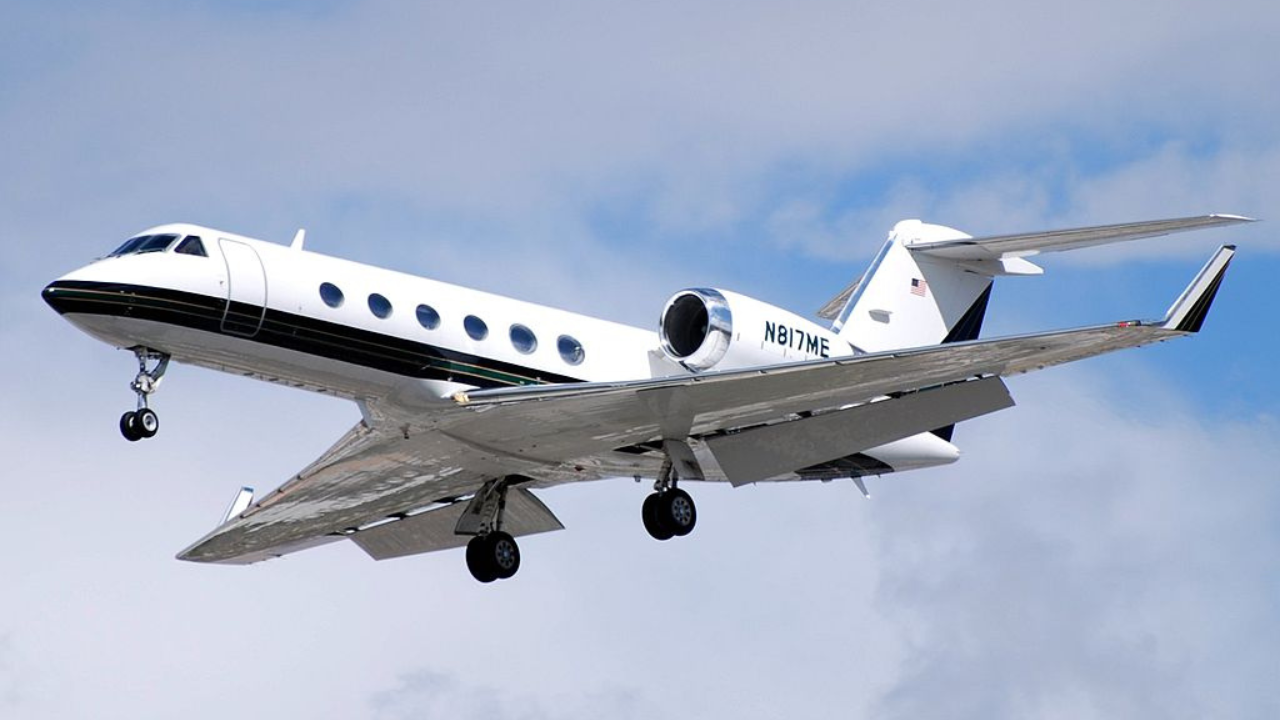Summary
- Gulfstream GII was a game-changer with a capacity of 16 passengers and coast-to-coast transatlantic flights.
- Gulfstream GIII excelled with a larger wingspan and winglets, Further expanding operational range and boasting up to 19 passengers.
- Gulfstream GIV offered an intercontinental range of 4,200 NM with improved fuel efficiency and advanced cockpit tech.
Gulfstream Aerospace’s efforts to create a jet-powered business aircraft date back to the 1960s. Then, Grumman, the company revolutionized business aviation through its initial offerings and by continuously improving its design. This article notes four such business jets that laid the foundation for what Gulfstream Aerospace is today.
1
Gulfstream GII
First flight: October 1, 1966
- Capacity: Up to 16 passengers
- Speed: up to Mach 0.85
- Service ceiling: 45,000 ft (13,716 m)
- Operational range: 2,600 NM (4,815 km)
- Number produced: 250+
Following the success of its first purpose-built turboprop aircraft, Grumman began design efforts on the jet-powered business aircraft in the 1960s. By the early 1960s, Grumman had delivered over 150 Gulfstream Is and the need for a jet-powered corporate aircraft was growing. Moreover, the manufacturer gained competition from Lockheed Jetstar, Dassault Falcon 20, and Hawker Siddlelet HS.125, all of which were jet powered aircraft.
Striving to create a faster and relatively longer-range business jet, Grumman introduced a swept-wing twinjet that had significant operational advantages over its predecessor, including speed, range, performance, and, above all, reliability. The manufacturer carried out an extensive analysis of the rear-mounted wing configuration before rolling out the final design.
The Gulfstream GII could accommodate up to 16 passengers and fly transatlantic routes without the need for refueling. On May 4, 1968. The GII became the first business jet to fly nonstop between the United States and Europe. The manufacturer designed two variants of the GII:
- With wingtip tanks allowing a greater operational range
- A new wing equipped with winglets for enhanced performance and fuel efficiency

Related
How NASA Used A Gulfstream II To Train Space Shuttle Pilots
The Gulfstream was modified to fly like the space shuttle orbiter.
According to Gulfstream Aerospace,
“The jet engines were mounted on the rear of the fuselage and the tail was modified in a T configuration. The aircraft flew up to Mach 0.85 and had a maximum cruise altitude of 45,000 feet/13,716 meters with a range of 2,600 nautical miles/4,815 kilometers.”
The manufacturer delivered over 250 examples of the Gulfstream GII, produced between 1967 and 1980.
2
Gulfstream GIII
First flight: December 1, 1979
- Capacity: Up to 19 passengers
- Speed: up to Mach 0.85
- Service ceiling: 45,000 ft (13,716 m)
- Operational range: 3,600 NM (6,667 km)
- Number produced: 200+
The success of the GII provided a running platform to Gulfstream Aerospace, which aimed at yet another new aircraft, the Gulfstream GIII. The initial design work began around the idea of a new wing—to enhance the aircraft’s performance in all areas, including weight, drag, fuel volume, and performance. However, design engineers soon realized that those benefits can be achieved by modifications to the existing (GII) wing.
The GIII retains the original wing box structure and trailing edge surfaces, with a longer wingspan, modified leading edge contour, and application of winglets. With a capacity for up to 19 passengers in a standard configuration, the Maximum Takeoff Weight (MTOW) was increased to 69,700 lb (31,615 kg). Approximately one year after its first flight in December 1979, the aircraft entered service.
According to Gulfstream Aerospace,
“The Gulfstream GIII™ stretched the limits of its predecessor, the Gulfstream GII. The GIII could travel 3,600 nautical miles/6,667 kilometers and a new wing design increased the wing span and added winglets.”
In October 1983, the Gulfstream GIII became the first business jet to fly over both the North and South Poles. Between 1980 and 1987, the manufacturer delivered just over 200 examples of the GIII.

Related
The First Gulfstream: A Look At The Twin Turboprop Grumman Gulfstream I
The Grumman Gulfstream I led to the evolution of the Gulfstream brand and the development of subsequent business jets.
3
Gulfstream GIV
First flight: September 18, 1985
- Capacity: Up to 19 passengers
- Speed: up to Mach 0.85
- Service ceiling: 45,000 ft (13,716 m)
- Operational range: 4,200 NM (7,778 km)
- Number produced: 500+
The intercontinental-range Gulfstream GIV was introduced in the early 1980s and performed its first flight in September 1985. The GIV, featuring advanced cockpit and cabin technology, entered service in August 1987. New cutting-edge Rolls-Royce Spey turbofan engines significantly improved the fuel consumption of the aircraft.
The aircraft had a revolutionary 4,200 NM (7,778 km) range, allowing it to be a true intercontinental business jet. The advanced flight deck and controls minimize pilot workload and enhance situational awareness, thereby increasing the flight’s and its occupants’ safety.
In 1993, Gulfstream worked on a “special performance” version of the jet, called as GIV-SP. With an increased takeoff and landing weight, improvements to landing gear and systems, and new Rolls-Royce Tay engines, the aircraft had a 15% less fuel burn than the GIV model.
The manufacturer produced over 500 examples of the GIV and GIV-SP combined between 1987 and 2003.

Related
Gulfstream IV Carrying Comedian Gabriel Iglesias Overruns Runway In North Carolina
The region was experiencing poor weather conditions around the time of the incident.
4
Gulfstream GV
First flight: November 27, 1995
- Capacity: Up to 19 passengers
- Speed: up to Mach 0.89
- Service ceiling: 51,000 ft (15,545 m)
- Operational range: 6,500 NM (12,038 km)
- Number produced: 190+
The Gulfstream GV, winner of the prestigious Robert J. Collier Trophy for advanced design and manufacturing techniques, introduced the ultra-long-range jet to business aviation. The GV performed its first flight in November 1995 and entered service in July 1997. The Rolls-Royce BR700 engines generated much greater thrust to support the lengthened fuselage off the ground.
Photo: Angel DiBilio | Shutterstock
According to Gulfstream Aerospace,
“The GV flew up to Mach 0.885 and at altitudes of 51,000 feet/15,545 meters and covered 6,500 nautical miles/12,038 kilometers. Gulfstream debuted its head-up display in the GV’s cockpit and wired the cabin as a complete computerized office.”
The manufacturer delivered more than 190 examples of the GVs.

Related
What Is The Gulfstream V’s Price In 2024?
A solid investment that holds its value?





